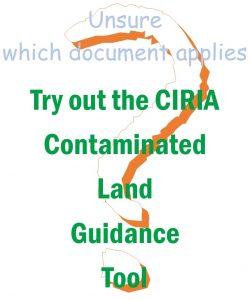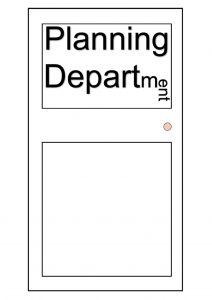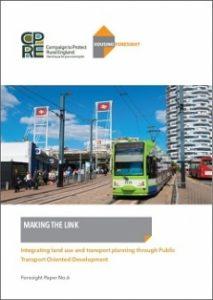CIRIA launch Contaminated Land Guidance Tool
We are proud sponsors of this resource, which is designed to be the place the industry goes to find directions to the current documents and guidance.
The CIRIA website states: “Over the last two decades CIRIA, as well as publishing over 50 guides on contaminated land, has gathered information on more than 200 industry guidance documents that help practitioners and other stakeholders to assess and manage risk related to contaminated land and brownfield sites in the UK. Following suggestions from members, information on these references has been compiled in a searchable form. ”

Network Rail hits buffers over Japanese Knotweed
A recent case involving Network Rail highlights the potentially costly effects of ignoring Japanese Knotweed and allowing it to grow unchecked.
Two neighbours took action after the plant, growing on a railway embankment next to their homes, spread into their properties, resulting the the values being almost halved. In this case the neighbours argued that the knotweed encroached on their homes which caused a nuisance and interfered with the quiet enjoyment of their property. In judgement at the crown Network Rail were ordered to pay £4,320 to each claimant to treat the knotweed and in what is being seen as a key test case, awarded £10,000 each in compensation for the fall in value of their homes.
This has clear implications not only for Network Rail, who of course have innumerable neighbours, but also for all landowners, who should now be redoubling their efforts to identify and control any Japanese Knotweed on their land.
Permission in Principle
New powers enabling local planning authorities (LPAs) in England to grant planning ‘permission in principle‘ (PiP) for new housing on certain categories of land will speed up the delivery of new homes, the government has advised.
LPAs are now required to produce and maintain up-to-date, publicly available registers of local brownfield land available for housing. Land listed in ‘part 2’ of these new brownfield land registers will be the first category to benefit from automatic PiP for housing-led development, before the new power is rolled out to other categories of land later this year.
The registers are to be split into two parts. Part 2 of the register should list land which has been allocated by the LPA for residential development following set procedures. This is the land to which PiP will apply.
PiP is designed to separate decision-making on issues such as land use, location and amount of residential development from matters of technical detail, thereby reducing opportunities for delay to new housing development during the planning process. Where PiP has been granted, a scheme will receive full planning permission once the LPA has consented to the technical details. The acceptability of the ‘in principle’ issues cannot be reopened at the technical stage. Once granted, PiP for a site will last for five years unless the LPA specify otherwise.
Statutory guidance for local authorities will be published by June 2017, and will explain the role of brownfield registers and PiP in more detail, according to the government.
Not all the legislation and guidance is in place for PiPs and it remains to be seen how effective they will be in accelerating permissions.
Brownfield Registers
Councils in England and Wales are to get new tools to speed up the development of derelict and underused land for new homes, Housing and Planning Minister Gavin Barwell has advised.
Brownfield registers were piloted in 2016, when 73 local planning authorities from across the country pioneered the measures.
All local authorities in England and Wales will now have to produce and maintain up to date, publicly available registers of brownfield sites available for housing in order to help house builders to quickly identify suitable brownfield sites.
Communities will be able to highlight local derelict or underused building sites that are primed for redevelopment thereby encouraging inward investment and increase the number of new homes in the area.
‘We need to build more homes in this country so making sure that we re-use brownfield land is crucial. We want to bring life back to abandoned sites, create thousands more homes and help protect our valued countryside. These new registers will give local authorities and developers the tools to do this,’ Barwell stated.

New asbestos and soil best practice guidance from CIRIA
New guidance on soils that have the potential to contain asbestos has been published by CIRIA.
It provides a practical framework to help minimise the health risks and liabilities when asbestos-containing soils (ACS) are encountered. The summary on the CIRIA website states:
“This site guide gives advice to all site workers who may come into contact with, or are required to manage, soils that have the potential to contain asbestos (eg groundworks/earthworks contractors, ground investigation contractors/supervisors, consultants, waste handlers). It provides a framework to help minimise the potential health risks and associated liabilities when asbestos-containing soils (ACS) are encountered on site. It also focuses on practical management of ACS in field conditions and builds on the guidance from Nathanail et al (2014) which sets out the risk assessment process and risk management framework for asbestos in soils.”

Proposed Changes to NPPF
The Department for Communities and Local Government has published a Summary of Consultation Responses, question 7 has particular relevance to brownfield development.
“Question 7. Do you consider that it would be beneficial to strengthen policy on development of brownfield land for housing? If not, why not and are there any unintended impacts that we should take into account?
Total number of responses 899; Organisational 588; Personal 211.
The majority of respondents were broadly supportive of proposals to strengthen policy on development of brownfield land for housing, and some called for the Government to reintroduce a policy requiring brownfield land to be developed before greenfield land. However, many also expressed concern at the possible unintended consequences about the Government’s proposed approach.
Respondents felt that it was important: i) to retain local determination in order to ensure policy is applied within the context of the local market conditions; ii) that brownfield sites should only be considered as suitable for development where they have adequate access to services and amenities; iii) that they can be retained for employment purposes in circumstances where there is a demonstrable need; and iv) that the delivery of housing on brownfield land should not be to the detriment of affordable housing provision. Other respondents felt that brownfield sites can be environmentally sensitive, and that there is a need to ensure that the planning process affords appropriate weight to this aspect. They also considered that inclusion of sites on the brownfield register should not override other policy considerations.
Some respondents felt that existing policy was adequate to bring forward brownfield land for development, while others expressed concern about the viability of brownfield sites and suggested that financial incentives should be considered to make brownfield more attractive to developers. Some respondents also expressed concern about the relationship between permission in principle and the brownfield register.”

Brownfield Registers – Pilots Published
The Government has piloted a set of open data standards for publishing information on brownfield land suitable for housing. Over 70 authorities took part in the pilot and the majority have now published their ‘brownfield registers’. Local authorities will be required to prepare and maintain these registers from this spring. The aim is to ensure that nationally consistent information on suitable brownfield sites is kept up to date and made publicly available for communities and developers.
“Brownfield first” needs more funding
In a recent item entitled “fresh approach needed for housing location” the RTPI argued for a rounded approach to use of both greenbelt and brownfield sites, siting the need to avoid emotional debates caused by a lack of confidence in decisions and to enable greenfield sites and green belt sites to be regarded more positively by local authorities, politicians and communities.
RTPI’s statement re-affirms the continued importance of using brownfield land as a priority, but it warns that this policy will fail if there is insufficient funding and a lack of remedial programmes to make sites ready for development and accessible to transport.
Phil Williams, RTPI President, said:
“’Brownfield first’ can only work with accompanying public investment. Without Government help in de-risking and making ready brownfield sites with upfront infrastructure, many sites will never come on stream.
CPRE calls for High Density High Quality Developments on Brownfield Sites near Transport Hubs
Housing should be developed alongside transport infrastructure for economic, social and environmental benefits, say countryside campaigners
A new paper released by the Campaign to Protect Rural England (CPRE) argues that high-density development near to high-quality public transport services could boost businesses and jobs, create more well-designed homes and build more diverse, exciting communities – all while reducing pressure on the Green Belt and the wider countryside.
CPRE’s ‘Making the Link’ paper builds on emerging changes to Government policy: the Government’s recent NPPF consultation identified 680 commuter hubs suitable for high density development, for example. The paper argues that attention can also be given to smaller places like market towns, which play a hugely important role in rural communities in delivering much needed connectivity, services, employment and business opportunities.
Situating high-density housing near transport hubs can concentrate development on brownfield sites in need of regeneration and increase connectivity to employment centres. This has the potential to make towns more attractive for residents and business, halt damaging urban sprawl and reduce car use and road congestion.
The paper suggests a number of options to encourage such development, such as reduced business rates for local businesses and the roll-out of planning tools to help identify suitable locations for development.
The paper calls for:
Higher-density development based around public transport hubs, planned around local services and waking and cycling.
Quality design: high density development needn’t mean tower blocks in market towns. Terraced housing and mansion blocks can provide high density homes and preserve the unique character of towns.
Diverse communities: developments should provide a mix of housing types for a mix of backgrounds and income levels.
Local services and business: developments should include shops, cafes and offices – providing convenient services for residents and helping local businesses grow. These businesses should benefit from reduced business rates in a similar manner to Enterprise Zones.

Asbestos in Soil and Construction & Demolition Materials
The Asbestos in Soil Joint Industry Working Group (JIWG) has published industry guidance on the
‘Control of Asbestos Regulations 2012: Interpretation for Managing and Working with Asbestos in Soil and Construction & Demolition Materials’.
To reduce the risk of falling asleep while still reading the title the document will be referred to as CAR-SOIL.